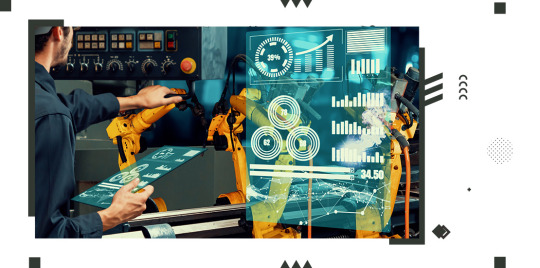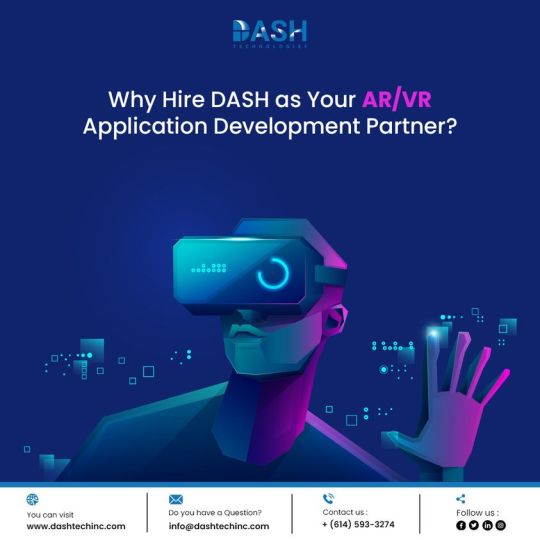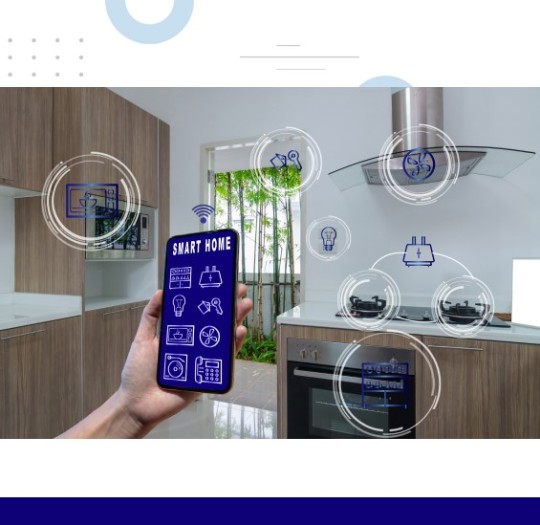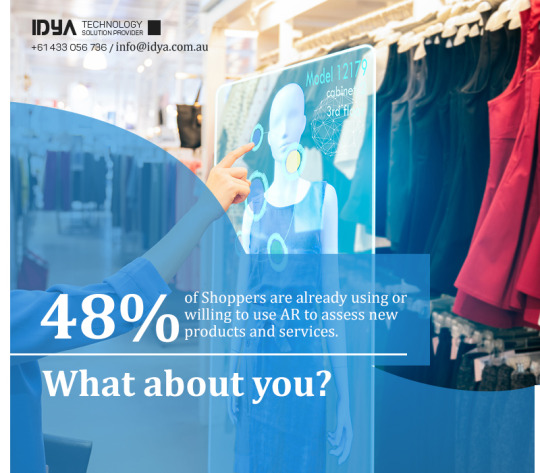#ar solutions
Text
7 Ways Augmented Reality can Enhance Manufacturing Productivity
The use of Augmented Reality (AR) has become increasingly prevalent across various industries, and its impact on the manufacturing sector has been particularly noteworthy. AR technology overlays digital information into physical objects, which can then be used for enhancing processes, improving efficiency, and ultimately increasing productivity in manufacturing. A report by ABI Research predicts that the manufacturing industry will receive around 27 million AR smart glasses shipments by 2025.
In the manufacturing landscape, productivity is the heartbeat of success. The AR toolkit introduces manufacturers to new levels of interaction and visualization. It's not just about improved efficiency; AR enhances precision, reduces training time, and transforms data utilization. Let's examine how AR development services improve manufacturing productivity.

1. ASSEMBLY LINE OPTIMIZATION THROUGH AR
Manufacturing depends on assembly lines, which are the backbone of the industry. These lines require precision, speed, and coordination to keep the entire process running smoothly. AR software solutions have emerged as a powerful tool to optimize assembly line processes, revolutionizing how tasks are performed, monitored, and improved. AR overlays digital information onto the real-world assembly environment, providing workers with real-time guidance, data visualization, and interactive instructions. This technology reduces errors, boosts productivity, and empowers workers to perform tasks with greater confidence and efficiency.
The aerospace giant Boeing adopted AR glasses on their assembly lines. Workers use these smart glasses to receive visual instructions for intricate tasks, reducing the need to constantly refer to manuals or training materials. The AR glasses guide them through complex wiring and assembly procedures, resulting in a 25% reduction in production time and a 40% decrease in errors.
2. ELEVATING TRAINING AND ONBOARDING PROCESSES
Augmented Reality (AR) offers a transformative solution to traditional training sessions by creating immersive and interactive learning experiences that accelerate learning, improve retention, and ensure a seamless transition for new employees into their roles. AR can simulate complex machinery, assembly processes, and maintenance procedures for manufacturing, allowing trainees to gain practical experience in a controlled and engaging environment.
Porsche utilizes AR technology to enhance the onboarding process for its assembly line workers. New employees are provided with AR glasses that display step-by-step assembly instructions directly onto the vehicle components. This immersive approach has led to a reduction in training time and a significant decrease in errors during the assembly process.
3. REMOTE ASSISTANCE AND MAINTENANCE
In the manufacturing industry, efficient maintenance and rapid issue resolution are vital to minimizing downtime and maximizing productivity. AR technology enhances remote assistance and maintenance by overlaying digital information onto physical objects, allowing experts to see exactly what the on-site technicians are seeing and guiding them through complex procedures. For example, the elevator manufacturing giant Thyssenkrupp employs AR for remote maintenance. Remote experts can see what the technicians see, leading to faster issue diagnosis and resolution.
4. ENHANCING QUALITY CONTROL AND INSPECTION
AR overlays digital annotations, diagrams, or color-coded indicators directly onto physical products, making defects and irregularities highly visible. Quality control inspectors can quickly spot anomalies that might be difficult to detect with the naked eye. AR can also provide real-time measurements and comparisons against design specifications. This ensures that components are within tolerances, helping to identify variations and deviations early in the manufacturing process.
Volkswagen employs AR for quality control of car exteriors. Inspectors use AR tablets to view virtual overlays of design specifications on the actual vehicle. This assists in identifying paint defects, dents, and misalignment, ensuring that vehicles meet visual and functional standards. AR ensures that quality control procedures are standardized across different inspectors and locations, leading to consistent evaluations, and reducing variability in product quality. AR-guided inspections provide step-by-step instructions to quality control inspectors, reducing the likelihood of human errors and oversight during the inspection process.
5. DESIGN AND PROTOTYPING ACCELERATION
With Augmented Reality, designers, engineers, and stakeholders can visualize, iterate, and refine designs more efficiently. The AR-driven design and prototyping process eliminates the need for physical prototypes and expedites the entire design process by enabling real-time interactions with virtual models.
AECOM, a global architecture, and engineering firm, employs AR app development services for architectural design and visualization. AR applications allow architects and clients to experience 3D building models at scale in the physical environment. This real-time visualization aids in design validation, spatial planning, and assessing how the proposed design integrates with its surroundings.
6. DATA VISUALIZATION AND ANALYTICS USING AR
By overlaying digital information onto the physical environment, AR enables manufacturers to visualize data in real-time, empowering decision-makers to gain actionable insights, identify patterns, and optimize processes more effectively. For instance, an automotive assembly line can make use of AR to display real-time performance metrics, such as production rates, defect rates, and machine statuses, directly onto the assembly floor. Workers and managers can visualize this data in context, facilitating quick interventions to maintain efficiency and product quality.
AR integrated with data sources, such as IoT sensors, databases, and enterprise systems pulls real-time data for visualization. These insights drive informed decisions, optimize processes, and enhance overall operational efficiency.
7. FACILITATION OF PREDICTIVE MAINTENANCE
Through AR technology, maintenance teams can access vital insights such as temperature, vibration, and pressure readings, allowing them to detect early signs of wear, stress, or deviations from optimal conditions. These visualizations provide an intuitive and immediate understanding of equipment health, enabling timely interventions to prevent costly breakdowns and minimize downtime. GE Aviation for instance utilizes AR for predictive maintenance of aircraft engines. Mechanics use AR headsets to access engine data and digital schematics, which are overlaid with the physical engine. This enables them to diagnose potential problems and transforms maintenance practices from reactive to predictive.
IN A NUTSHELL:
By integrating AR technology into their operations, manufacturing businesses can gain accuracy, flexibility, and sustainable achievements. From assembly line optimization to quality control, training, and predictive maintenance, AR app development services are paving the way for streamlined processes, reduced errors, and enhanced decision-making. Equip your manufacturing enterprise with AR industrial applications and experience the transformative power of AR technology to boost efficiency and profits. Reach out to us at [email protected] and unlock the potential of AR for your success.
0 notes
Text

0 notes
Text

Improve your brand's experiences by introducing AR technology to customer touch points.
Looking for AR Consultant in Brisbane, Australia, Reach us to get the best AR Solutions.
0 notes
Link
0 notes
Text
Augmented Reality: The Future of Education
When the digital medium of transmission came of age, communication and, more importantly, education evolved and made the magic leap from print to digital and from 2D to 3D in the form of animations and online videos. The past few decades saw great strides happening in the field of online education in the form of interactive whiteboards and simulations, educational games, online blackboards, and classrooms permeating the educational sphere.
For more information click here: https://www.holopundits.com/blog/2020/10/augmented-reality-future-of-education.html
0 notes
Link
Vroncloud is a leading Virtual Reality & Augmented Reality App Development Company in Ahmedabad, India & USA. Offering AR and VR development solutions to get your goal in a business meeting.
#VR Solutions#Ar Solutions#Virtual reality company#Augmented Reality Company#Virtual Reality apps#augmentedreality#agumented reality#AR apps#VR apps development services#apps#mobile app development#mobile app design#mobile app developers
0 notes
Text
🔥 Explore the Future of Reality! 🌟
Just stumbled upon this fantastic blog highlighting the Top 12 AR/VR Development Companies in the USA. If you're as excited about Augmented and Virtual Reality as I am, this is a goldmine.
Discover the trailblazing companies shaping the immersive tech landscape. Let's dive into the amazing world of AR/VR together! 🕶️
🚀 Check out the blog here
#AR #VR #TechnologyInnovation #ImmersiveTech
#augmented reality#virtual reality#ar vr app development#ar solutions#ar vr development company#arvr companies in usa
0 notes
Photo

Enhance the new technologies of Augmented & Virtual Realities to view real
world environment and get digitally manipulative information. It creates computer-generated sound, graphics, images, the 3D structure of objects that seem to be real and happening live. AR, VR solutions are fascinated for business development and offers an immersive experience to the customers.
0 notes
Text
Businesses, organizations, and consumers are leveraging the technology to view and explore items in the real world situation, thanks to the greatest ever Smartphone penetration rate and a boom in AR/VR Development Services. While there are a lot more museums getting in on the act as well. AR technology is well-suited for a museum setting, allowing visitors to not only see but also interact with the object. All of this occurs when guests aim their AR-enabled Smartphones at the objects, which displays a changed representation of the object.
#Augmented reality apps#Augmented Reality Company#AR solutions#Augmented Reality technology#augmented reality solutions
0 notes
Text

At Idya, we combine cutting-edge tools and technologies with deep knowledge of our clients' requirements to develop high-quality and competitive Augmented Reality Applications.
Leverage your AR Experiences with Idya Technology - Trusted AR App Development Company in Brisbane.
0 notes
Text
We are your Virtual Team! by Apparmo
[youtube=http://www.youtube.com/watch?v=9ZxUweeGpG8&w=560&h=315]
You need a strategy
Mobile Marketing is still in its infancy and nearly 70% of large companies don’t have a strategy yet.
Jump forward 5 years and its not hard to imagine that mobile…
View Post
0 notes
Text
How the Integration of AR and IoT enables a smart and interactive environment
Discover how the integration of Augmented Reality (AR) and the Internet of Things (IoT) is transforming the way we interact with the world around us. From smart homes to immersive retail experiences, explore the possibilities of a more connected and interactive environment.
British technologist Kevin Ashton coined the phrase "Internet of Things" (IoT) in 1999 to describe a network that links not just people but also the items in their immediate surroundings. Most people assumed it was the stuff of science fiction movies at the time.

Today, IoT is transforming the world around us, influencing medical, communication, energy and sustainability, utilities, security, facilities, transportation, and many other areas. As digitization transforms every aspect of human existence, from living rooms to offices, augmented reality (AR) is emerging as the key to unlocking the untapped potential of the Internet of Things.
Merging Augmented Reality with IoT
With the help of computer-generated data, augmented reality (AR) offers a view of the real world in augmented space. People can solve their problems intelligently and gain a greater awareness of their surroundings. The Internet of Things (IoT) is a network of physical devices that contain sensors, software, and other technologies. Through the Internet, it communicates and exchanges data with other systems. Statista predicts that the installed base of IoT devices will reach nearly 75.44 billion by 2025.
The combination of IoT and AR is powerful enough to allow users to learn about their surroundings and perform correctly. While IoT provides real-time data access, AR can help to blur the line between the physical and digital worlds. The convergence of AR and IoT is nothing short of a massive revolution, with IoT bridging the gap between physical devices and digital infrastructure and AR digitizing life through real-time interaction with the physical environment. Through collective big data analysis and context-based services, the combination forms the foundation for smart environments.
How do AR and IoT integration facilitate smart and interactive environments?
The complementary integration of Augmented reality and IoT ensures a future smart and interactive living environment by making AR scalable to cover objects everywhere with optimum performance and interacting with IoT in a more intuitive manner. To achieve such a synergistic integration, there are three essential elements:
1. Distributed and object-centric data management
Internet of Things (IoT) and augmented reality (AR) services frequently require the management of generic data and service content for physical everyday objects. When an IoT object communicates its own control interface information, the AR client can be programmed to carry out specific control operations via AR interaction. Thus, the AR client contains critical information such as AR recognition and tracking features, generic content and information about the object itself, a control interface, and organized additional contents for the operation.
An AR user who is interested in AR services can retrieve artificial indicators (or natural features) from nearby objects. The user can then visualize the filtered AR objects, which are nearby IoT-capable objects based on their relative distance or direction from the user, in new locations while holding the mobile device. The required data is then instantly sent to the client AR system for each object with the associated sensor.
By donning a video see-through head-mounted display (HMD) or using a mobile phone with a connected camera module, the user can experience an effective augmented reality (AR) environment (for example, an IoT control interface) to combine the virtual item. A more recent trend in accessing surrounding objects is to use adjacent computing resources in the user's surroundings, rather than enabling computing services on the other end of the network, such as a remote server. The bottleneck assignment issue and the remote server's ability to identify moving objects are two issues that can be resolved with the nearby computing technique.
2. IoT object-guided tracking
AR technologies related to the context of physical objects are closely related to intuitive visualization with attributes that can help physical objects interact with their surroundings. Because of the useful information associated with natural characteristics, an AR system based on natural feature tracking would be more effective than any other AR marker in improving tracking performance. The most important technical challenges for AR are fast, correct, and stable object recognition and spatial tracking.
Another recently popular technique is a feature-based method that uses primitive geometric features and their properties detected by a sensor to identify an object and compute its pose. When it comes to objects without rich features, template image matching is frequently used; however, this method has many drawbacks when it comes to robust 3D tracking. Model-based tracking is a viable method that employs an effort to identify and track target objects by matching and fitting a 3D frame model to the edges derived from a camera image.
AR tracking methods based on the binding of real space and virtual objects should be superimposed in real time over real IoT objects. AR-IoT combination results in robust object-optimized tracking by considering tracking characteristics of each object, accessorial tracking information in limited environments such as darkness, AR authoring for IoT devices, and intuitive representation of physical features of IoT devices.
3. AR-based object control and interface
Object control, either locally or remotely, is now the most common use of the Internet of Things (IoT). IoT objects include actuators to manage the object's functionality as well as sensors for incoming data and networking modules for wireless connectivity. When a user activates an appliance (for example, a television) in the real world, the attributes of the installed sensor to detect the user's action are transferred to the simulated world.
After then, a parallel representation of the actual world can be created from the monitored virtual world. This technology was created to implement eco-feedback for energy conservation. In the future, IoT objects will communicate with one another, and AR users in operational environments will be able to intuitively manipulate the context of objects with the support of innovative AR software solutions. A powerful feature of the AR-IoT combination is object class-based interaction, customization, and optimization.
On an ending note,
Smart Internet of Things (IoT) users are expected to operate and interact with physical objects that can receive augmented reality (AR) datasets anytime and anywhere, enhancing their visual perception. Various AR approaches (e.g., AR tracking, interactivity) have the potential to improve the usability of physical IoT objects in the user's immediate vicinity while also providing classification and taxonomy for IoT-enabled AR.
Smarter and more effective user interactions should be added to the current bare IoT infrastructure. The client can effectively use distributed data or content imbued with individual or meaningful sets and groups of IoT objects. The distribution allows for the scaling and customization of interaction techniques such as augmented reality. If you want to unleash the power of data with AR and IoT, there are countless use cases you can investigate to find the one that best fits your industry type.
However, companies must be proactive in deciding where to deploy the technologies, developing an ecosystem that supports IoT and AR, and developing talent capable of using both technologies. Companies can reduce costs, increase revenue, improve customer experience, strengthen brands, and use contextual data in unimaginable ways by doing so.
0 notes
Text
Top 6 Augmented Reality Uses That Solve Real-Life Problems
Technology has changed and keeps changing our lives like never before. The key idea behind the usage of technological resources is to utilize the knowledge to create solutions. Augmented reality as a technology is often seen as a source of entertainment or leisure. However, it is a technology that has much wider implications which goes beyond the entertainment sector including manufacturing, designing, construction and so on.
AR Software solutions will have a significant role in building tomorrow’s smart cities. In the modern era, an AR development company could be consulted to find any form of engaging and immersive solutions which could turn the course of any business or service. Augmented Reality can offer sustainable, technologically advanced yet productive solutions to different problems of mankind.
The following are the very few among them.

1. Marketing
Marketing involves strategically planning and communicating any information which could have significant commercial implications on any business concern or individual. It is important for every growing business to communicate its products or services to the potential customers to encourage them to participate in business transactions which involves the purchase of goods or utilisation of services offered by such concern.
In the virtual world, it is very difficult to capture the attention of audience to the benefit of the company. Augmented reality can serve as a tool to create an attractive immersive environment that could attract potential customers.
2. Education
Education involves an all-round development of an individual which improves their response to the surrounding environment. Education can significantly change the course of humanity by improvising the information communicated and the manner in which it is communicated.
It is important to grasp the basics and it is difficult to communicate effectively to heterogenous group of students. However, an AR development company can create an immersive environment wherein information could be easily communicated in a creative manner to the students. This could be also helpful in providing training to employees.
3. Event planning
There is a strategic planning and effort behind every successful event. It involves managing the factors of entertainment, safety, décor, arrangements, food and accommodation. One of the key risks in event planning is when the event planner’s vision does not match the reality.
Often a planner shall be planning event based upon the previous experience and available information. However, an event planner might have to wait till execution for the planner to understand the scope of an event. AR offers an immersive environment wherein an event could be visualized prior to it happening.
4. E-commerce
E-commerce is booming in this virtual world with everything being available on your fingertips. People spend hours on E-commerce platforms and purchase several goods online. However, the e-commerce platforms still can’t guarantee product quality and is not devoid of the scams. A potential customer could customize and personalize shopping experience for the customer in e-commerce platforms enabled by augmented reality tools.
5. Design and modelling
Augmented reality has revolutionized manufacturing forever. Augmented reality could be used in designing the product without actually making the physical models of the design which substantially reduces the cost and time. Another aspect of using AR software solutions is that it can potentially reduce the wastage of materials through this. Additionally, usage of technology in the process of design and modelling can help in easily making alterations and understanding the potential risks with the design. It can also help in strategizing the manufacturing process.
6. Repair and maintenance
Repair and maintenance are a key part of any industry. Consistent maintenance and repair of damages is necessary for ensuring the safety, functioning and quality of any machinery. The absence of consistent maintenance could have substantial effect upon the productivity and the profit. It can also cause accidents and failure of machinery.
Any entity would try to ensure that their investment remains productive and profitable. However, the lack of sufficient skilled labor and the expenses in maintaining a permanent team may become detrimental to the interests of a company. Augmented Reality enables virtual assistance, remote repair and training of employees which can enhance the repair and maintenance experience for the companies.
It's of no doubt that technology offers wide prospects to humanity in the future. Every sector is adapting to the needs of the society for faster solutions. Even courts have started using video conferencing to adjudicate matters. However, till the recent years virtual world has been a lot different from the physical world.
Augmented reality enhances the virtual experience to the extent that it is as close as reality. The immersive environment created by an AR development company could change the course of businesses. It would help the companies to adopt real time solutions that would make improve the consumer experience and business viability. Additionally, AR could contribute towards the creation of smart cities as well as public governance through tech enabled solutions which would cost less time and cost
0 notes
Video
AR-based DC Generator for training. #training The application can be used to identify a predefined object and a 3D model can be generated of the same for interactive training sessions. Achieve effective learning with the ar development services by Travancore Analytics
0 notes
Text

It's great to work with clients from a diverse range of backgrounds and diversify our Portfolios. We previously applied the latest AR Solutions to boost the revenue of a leading Home Appliance Manufacturer.
If you are in a similar domain, check out our Case study to learn more and feel free to contact us - Leading AR Development Company in Brisbane.
#AR For Home Appliances Business#Home Appliances Manufacturer#Idya Technology#AR Solutions#AR Experts
0 notes
Text

48% of Shoppers are already using or willing to use AR to assess new products and services. What about you?
For retail businesses, our AR Experts delivers custom solutions that meet your needs - AR Experts in Brisbane.
0 notes